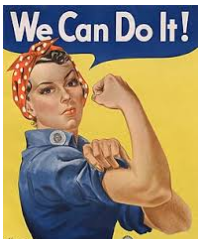1 Chapter One: Sports Feminism
Section One: The Fundamentals
A) What do we know about sport? What are common assumptions we make about sport and society?
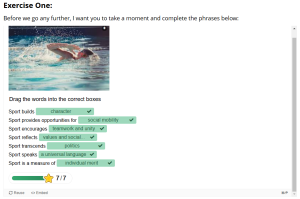
|
Political Hand on Sports People say goes beyond politics, but that is not always true. Different countries have different political systems, and that affects how sports are run. In some places, governments control sports organizations, deciding who gets funding, which athletes get opportunities, and even who represents the country. Some governments use sports for national pride, while others see it as a way to distract people from bigger issues. In my country Bangladesh, politics is deeply involved in sports, especially in cricket and football. There have been cases where team selections, club management, and funding decisions are influenced by political connections rather than merit. Corruption can also play a role, with money meant for developing sports facilities sometimes being misused. Instead of sport being separate from politics, it often reflects the same power struggles and favoritism seen in other areas of society. So, while sport has the potential to bring people together, it’s not always free from the political realities of the country it exists in. |
Exercise 3: Notebook prompt
What are some other metanarratives about sport that you are familiar with? Find an image or video clip or draw something yourself that captures this idea…
So what? Why does any of this matter? Does it matter? As something we grow up with – live with – play through – we don’t often interrogate the meanings of sport, and perhaps we don’t want to.
But being aware of these assumptions and metanarratives is especially important, I would argue, because of the centrality of sport to our everyday lives, the role that sport plays in shaping our childhood and worldviews and….. [finish that thought]
|
and the way it shapes what we believe about success, fairness, and who gets to belong. Sport is a big part of our lives and it influences how we grow up, what we value, and even how we see ourselves and others. If we do not think about these ideas, we might not notice the ways sport can be unfair or how it sometimes favors certain people over others. By paying attention to these stories we tell about sport, we can ask better questions about who is included, who is left out, and how we can make sports better for everyone.
Metanarrative I can think of: Sports to beat poverty People often believe that sports can help poor individuals build a better life and become successful. Many athletes have used their talent to get scholarships, earn money, and become famous worldwide. 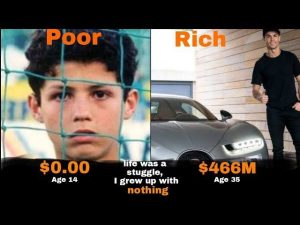
|
B) What is social justice?
Exercise 4: Padlet Prompt
Think back to the last section and try to look at some of the ideas we discussed differently. How might sport and social justice actually co-exist?
Record any images, video clips, or gifs you added to the padlet and identify a point of intersection between sport and social justice (can be an issue or a barrier or a debate or something you would like to explore in more depth in this course) . Screenshot or paste in your response below.
Football actually shows us they actually can. The “No Room for Racism” campaign in the English Premier League is all about making sure racism isn’t part of football. It brings together players, teams, and fans to show that racism is not accepted. If players are caught being racist, they can get penalties like fines or suspensions. The EPL also encourages people to report any racist actions they see. The campaign works both on and off the field to promote respect and fairness. The EPL uses its popularity to spread the message that football should be a place where everyone is treated equally, no matter where they come from.
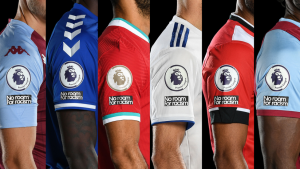
|
C) Social Justice Reading
(note: this activity is optional!)
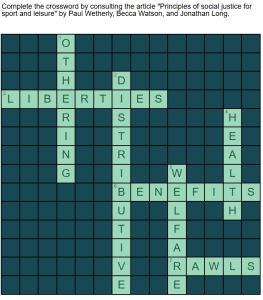
D) KINESIOLOGY AND SOCIAL JUSTICE
Exercise 5:
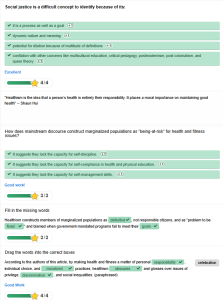
Exercise 6:
What are the implications of bodies-at-risk discourse and the refusal to understand the health gap from a social justice perspective, according to the authors of this article?
| The authors say that focusing on bodies at risk makes people see health as an individual problem, not one affected by social issues like poverty or race. They argue that ignoring these social factors prevents us from understanding the true causes of health problems. This approach keeps health tied to profit and does not address the bigger issues of fairness and equality in society.
As we learned in Social Justice in Kinesiology, Health, and Disability by Harrison, Azzarito, and Hodge, the health gap in the U.S. is not just about individual choices but is deeply connected to a history of racial exclusion, discrimination, and school segregation. The idea of bodies-at-risk, shaped by the views of wealthy, White communities, ignores these larger social and economic forces. This way of thinking continues to blame marginalized groups for their health struggles instead of addressing the unfair systems that have put them at a disadvantage. |
Section Two: Sport Feminism
Exercise 7: Notebook Prompt
What is feminism? What does it mean to you? Choose one of the images below and explain how it captures your understanding of feminism (or find one that does speak to you and paste this into your pressbook with an explanation of why it matters to you.
| Feminism is the belief that men and women should have equal rights and opportunities. It means to me fighting for fairness and equal treatment for all genders.
The we can do it poster shows a woman flexing her arm and saying that women are strong and capable. To me, this captures feminism because it shows that women can do anything men can do. It’s a symbol of women’s strength and independence, and how they can take on any challenge. This poster reminds us that women deserve the same respect and opportunities as men.
|
Exercise 8: Notes Prompt (optional)
NB: Cornell notes is a great resource that teaches effective notetaking. Unfortunately, our system can’t save notes taken in the H5P app, so this is fully optional.
Exercise 9: Crossword Activity
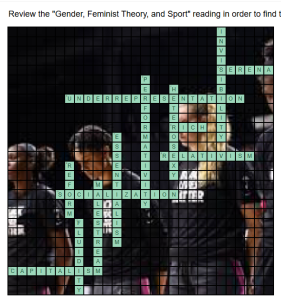
Exercise 10: Padlet Prompt
| feminism privilege radical feminism liberal feminism womens rights gender sexuality homophobia oppression class inclusion intersectionality access equality marxism sports |
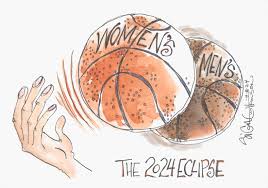
|
|

